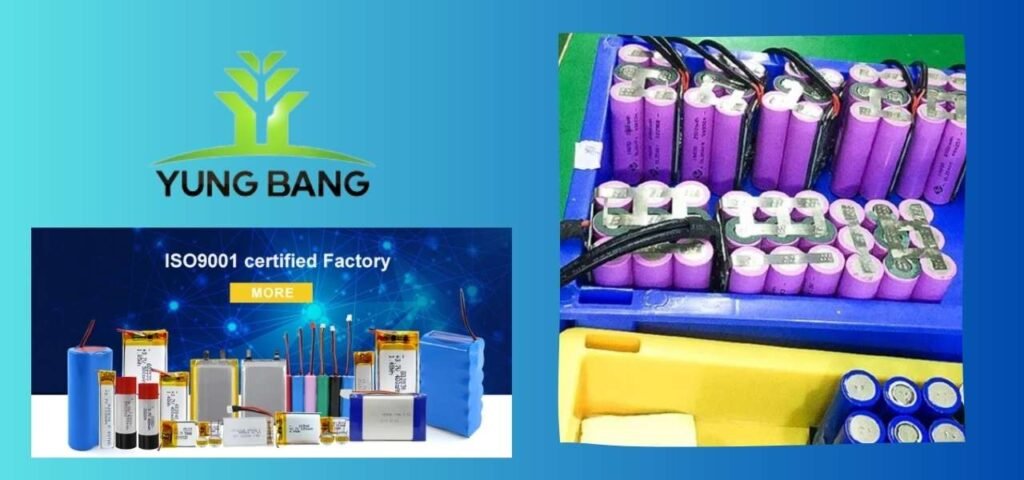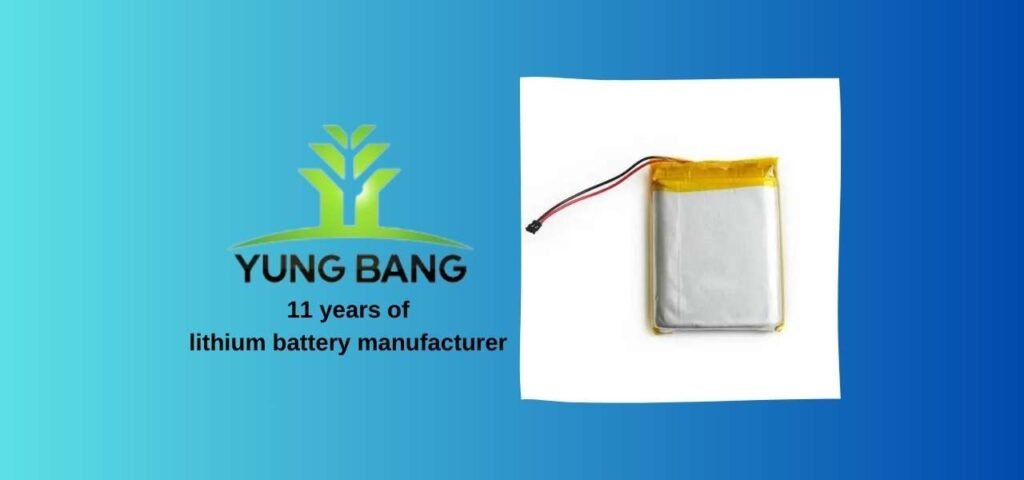锂聚合物(Li-Poly 或 LiPo)电池 锂聚合物电池已成为现代技术中应用最广泛的可充电电池类型之一。从为无人机、智能手机和笔记本电脑供电,到为电动汽车提供能源,锂聚合物电池将高能量密度、轻质设计和多功能性完美地结合在一起。然而,在采用这种强大技术的同时,也需要正确处理和了解其特性。
在本指南中,我们将为您介绍有关以下方面的所有知识 锂聚合物电池包括它们的工作原理、优缺点、安全问题以及有效使用它们的最佳做法。

什么是锂聚合物(Li-Poly)电池?
A 锂聚合物(Li-Poly) 电池是一种充电电池,它使用一个 高分子电解质 而不是传统的液态电解质 锂离子电池.锂聚合物电池的电解质通常为凝胶状物质,因此设计更加灵活、轻巧。
从技术上讲,锂聚合物电池属于 锂离子电池但它们在构造上有所不同。聚合物电解质的使用使制造商能够制造出各种形状和尺寸的电池,使其成为空间和重量成为关键因素的应用的理想选择。
锂聚合物电池如何工作?
与所有锂电池一样、 锂聚合物 电池通过以下运动储存和释放能量 锂离子 在两个电极之间: 阴极 (负极)和 负极 (正极)。在充电和放电循环过程中,隔板和聚合物电解质可使离子在这两个电极之间流动。
充电过程:
在充电过程中,锂离子从 负极 到 阴极锂离子被储存在这里。阳极通常由石墨制成,在需要锂离子时充当储存锂离子的介质。
卸料过程:
当电池使用时,这些锂离子会从电池内部移回电池组。 阴极 到 负极从而释放储存的能量,使设备正常工作。这一过程会产生电流,为连接的设备供电。
锂聚合物(Li-Poly)电池的优势
锂聚合物电池 具有多种优势,是各种应用的热门选择。下面我们就来详细介绍其中一些最显著的优点:
1.轻巧灵活的设计
其主要优势之一是 锂聚合物电池 是他们的 轻巧灵活的外形设计.由于锂聚合物电池使用聚合物作为电解质,因此可以制成各种形状和尺寸,适用于智能手机、平板电脑和可穿戴设备等超薄设备。
2.高能量密度
锂聚合物电池具有 高能量密度这意味着它们可以在相对较小和较轻的封装中存储大量能量。这使得它们非常适合需要高功率输出而体积最小的应用,如无人机、电动汽车和其他便携式电子产品。
3.紧凑型设备的更高性能
能够创建 轻薄小巧的电池 而又不牺牲容量的主要原因是 锂聚合物电池 等设备中使用。 笔记本电脑, 智能手机和 可穿戴技术.灵活的设计还能让制造商在狭小的空间内最大限度地提高电池容量,从而延长电池寿命。
4.无记忆效应
与老式电池技术不同,如 镍镉 (NiCd)因此,锂聚合物电池不会出现以下问题 记忆效应.记忆效应是指电池在完全放电前充电后,会 "记住 "较低的充电容量。 锂聚合物电池 可随时充电,而不会随着时间的推移失去最大容量。
5.更低的自放电率
锂聚合物电池的 低自放电率这意味着它们可以在不使用时保持较长时间的电量。这对于间歇性使用的设备尤为重要,如备用电源、遥控器或季节性设备。
6.高出院率
锂聚合物电池可提供 高放电率这意味着它们可以快速释放储存的能量。这对于需要短时间爆发高功率的应用来说至关重要,例如 遥控车, 无人机和 电动工具.
锂聚合物(Li-Poly)电池的缺点
虽然 锂聚合物电池 在提供许多优点的同时,它们也并非没有缺点。了解这些局限性对于安全有效地使用它们非常重要。
1.寿命较短
其主要缺点之一是 锂聚合物电池 是他们相对 短命 与其他类型的充电电池相比,锂聚合物电池的寿命更长。锂聚合物电池的平均寿命约为 300 至 500 个充电周期 电池容量才会开始明显下降。随着时间的推移,电池将失去充满电的能力。
2.成本较高
锂聚合物电池通常更 值钱 比其他类型的充电电池,如 镍氢(NiMH) 或 镍镉 (NiCd) 电池。成本较高的原因是其构造采用了先进的技术和材料。
3.对过度充电和过度放电的敏感性
锂聚合物电池对以下因素更敏感 过度充电 和 过度放电 比其他类型的电池。过度充电会导致电池膨胀、泄漏甚至起火,而放电低于最低安全电压则会造成永久性损坏。
4.潜在的安全风险
虽然总体上是安全的、 锂聚合物电池 会构成 安全风险 如果处理不当。物理损坏、过度充电或暴露在极端温度下都可能导致电池膨胀甚至起火。因此,在使用锂聚合物电池时,正确的使用、充电和储存至关重要。
锂聚合物(Li-Poly)电池的应用
1.无人机和遥控车
最常见的用途之一是 锂聚合物电池 在 无人机 和 遥控车.这些应用得益于锂聚合物电池的轻质设计和高放电率,使加速更快、飞行时间更长、整体性能更好。
2.智能手机和平板电脑
在 消费电子产品, 锂聚合物电池 为各种设备供电,包括 智能手机, 药片, 笔记本电脑和 可穿戴设备.纤薄的外形和高能量密度使制造商能够在不牺牲电池寿命的情况下制造出时尚的便携式设备。
3.电动汽车和电动自行车
虽然 大型电动汽车 通常使用 锂离子电池在这些电动汽车中,较小的电动汽车如 电动滑板车, 电动自行车个人移动设备通常使用 锂聚合物电池.轻巧的设计和高效的能量输出使它们非常适合这些应用。
4.便携式移动电源
锂聚合物电池 常用于 移动电源这种电池常用于为智能手机和其他小型电子产品充电。高能量密度和小巧体积的完美结合使其成为便携式能源解决方案的理想选择。
5.医疗设备
在医疗领域、 锂聚合物电池 电源设备,如 便携式氧气浓缩器, 胰岛素泵和 心脏监测仪.这些设备需要可靠、轻便、可长时间充电的电池,而锂聚合物电池完全可以满足这些要求。
锂聚合物(Li-Poly)电池的安全注意事项
因为 锂聚合物电池 如果处理不当,它们可能会挥发,因此必须遵守安全准则,以确保它们的安全使用和使用寿命。
1.使用正确的充电器
请务必使用专为 锂聚合物电池.这些充电器具有防止过度充电的安全功能,可确保电池正确充电。使用不正确的充电器可能导致电池膨胀或起火等危险情况。
2.监控充电
永远不要离开 锂聚合物电池 充电时无人看管。必须对电池进行监控,确保其不会过热。许多用户将锂聚合物电池放在 防火充电袋 作为充电期间的额外预防措施。
3.适当储存
不使用时,请将锂聚合物电池存放在一个安全的地方。 阴凉干燥处最好在 50% 充电.长期存放充满电的电池会缩短其使用寿命,而存放完全放电的电池则会导致其损坏,无法修复。
4.避免物理损坏
锂聚合物电池对 物理损坏.避免电池跌落、刺穿或弯曲。如果电池出现肿胀或损坏迹象,请立即停止使用并妥善处理。
5.小心处理膨胀的电池
如果一个 锂聚合物电池 电池开始膨胀或 "起泡",这是内部损坏的迹象。请勿尝试使用膨胀的电池或为其充电。将电池放入一个防火容器中,并将其安全地丢弃到安全的地方。 电池回收中心.
如何延长锂聚合物(Li-Poly)电池的使用寿命
虽然 锂聚合物电池 不过,有几种方法可以延长它们的使用寿命,让您的投资发挥最大效益:
1.避免完全放电
请勿完全放电 锂聚合物电池.将电池电量保持在 20% 和 80% 可以大大延长其使用寿命。
2.在正确的电压下储存
如果您计划将您的 锂聚合物电池 长期存放,存放温度约为 每个电池 3.8V (大约充电 50%)。这有助于保持电池的容量,防止电池长期使用后损坏。
3.使用平衡充电
对于多节锂聚合物电池,请使用 平衡充电器 确保每个电池单元都能均匀充电。这样可以防止任何一个电池过充,延长电池的整体使用寿命。

结论
锂聚合物(Li-Poly)电池 我们为现代设备供电的方式发生了革命性的变化。 轻质设计, 高能量密度和 多功能性.从无人机和智能手机到电动汽车和医疗设备,锂聚合物电池是当今技术领域不可或缺的一部分。
然而,在拥有强大功能的同时,还必须注意特定的安全问题。只要遵循正确的充电、储存和处理准则,就能最大限度地延长电池的使用寿命并提高其安全性。 锂聚合物电池.随着技术的不断发展,我们可以期待看到更多的应用。 锂聚合物电池进一步巩固了其在可充电领域的地位。
常见问题
1.锂聚合物电池比锂离子电池好吗?
锂聚合物电池 在形状和尺寸方面具有更大的灵活性,因此是紧凑型设备的理想选择。但是 锂离子电池 一般来说,它们的使用寿命更长,能效更高,因此更适合电动汽车等应用。
2.锂聚合物电池会起火吗?
是的、 锂聚合物电池 如果过度充电、物理损坏或暴露在极端温度下,可能会起火。正确的处理和充电方法可将这种风险降至最低。
3.锂聚合物电池的寿命有多长?
平均而言 锂聚合物电池 最后一个 300 和 500 个充电周期 在它们的容量开始衰减之前。适当的保养有助于延长它们的使用寿命。
4.锂聚合物电池可以使用普通的锂离子充电器吗?
不,您应该使用专门为以下设备设计的充电器 锂聚合物电池.普通的锂离子充电器可能不具备防止过度充电的必要安全功能,可能会损坏电池。
5.如何处理膨胀的锂聚合物电池?
A 膨胀的锂聚合物电池 不得使用或充电。请将其放入防火容器中,并在适当的地方进行处理。 电池回收中心.

